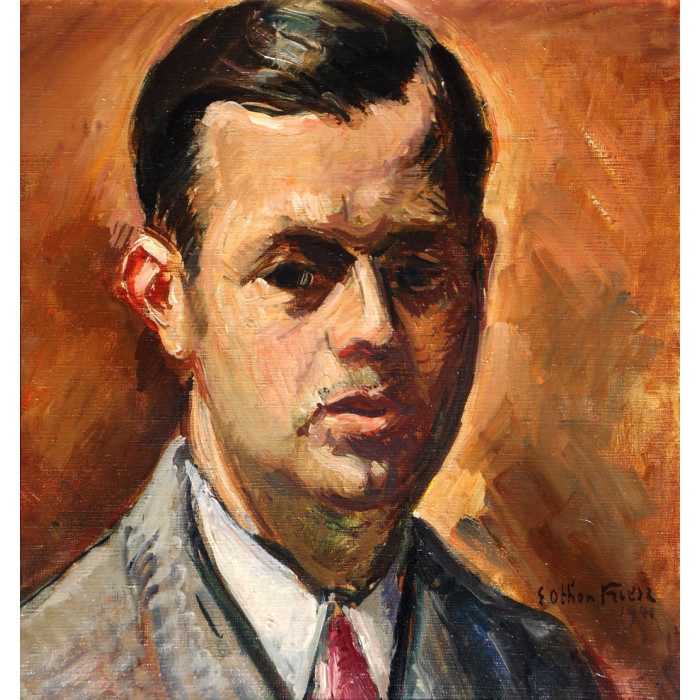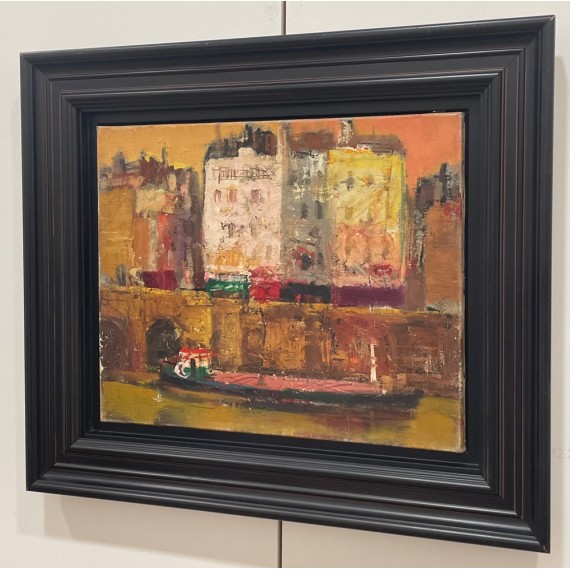Emile Othon Friesz
"Portrait of the merchant Paul Petrides"
Oil on canvas.
Signed and dated lower right.
Dimensions: 36x33cm.
Date: 1940
Painter and engraver.
Le Havre February 6, 1879 - Paris January 10, 1949.
Son of a captain in the long course, and grandson of a captain of apparaux, author of a map of Martinique and Guadeloupe; his mother, Eucharis, was of Creole origin.
Friesz, helped by his mother, had a hard time admitting to his father, "a grumbling and formidable giant," that his true vocation was painting.
He had been, in Le Havre, the pupil of Charles Lhuilier, curator of the Museum, a local painter who "owes his pupils Dufy, Braque and Friesz the glory of being quoted in all the histories of contemporary art".
Friesz and Dufy shared a "workshop", in fact a maid's room, in 1896.
In October 1897, thanks to a purse of the city which was served until 1905, he left for Paris, where he entered the Beaux-Arts in Bonnat's studio, with whom he became angry.
His early works were Impressionist, then under the influence of van Gogh and Gauguin, he gave primacy to color and was part of the group of Fauves.
With Braque he visited Antwerp, then went alone to paint in Provence and on the Normandy coast.
From 1908, probably because of the influence of Cezanne, he moved away from Fauvism, and elaborated a more constructivist work; his palette became duller, he favored ochres, browns, greens, and austere blues.
In addition, the rigid lines, the thick underlining of forms made his works less attractive. His subjects remained traditional, nude, landscapes, still lifes and portraits.
He began exhibiting to the Independents in 1903 and the following year at the Salon d'Automne.
Galleries Berthe Weill and Duret hung it on their picture rails.
The Jacques Hamon Gallery, place Thiers, organized an exhibition, as part of the Manifestations in memory of the painter by the municipality of Le Havre, in April 1950. Friesz was married in 1915, and died in 1949 in the 6th arrondissement of Paris. From 1950, the Paul Pétridès gallery permanently exhibited it.
He had sold the studio at 12, rue Cortot to his friend Raoul Dufy in 1906.
Identify
Account
Language :
-
 Français
Français
-
 English GB
English GB
No products
To be determined
Shipping
0,00 €
Total
Product successfully added to your shopping cart
Quantity
Total
There are 0 items in your cart. There is 1 item in your cart.
Total products
Total shipping
To be determined
Total
Search














